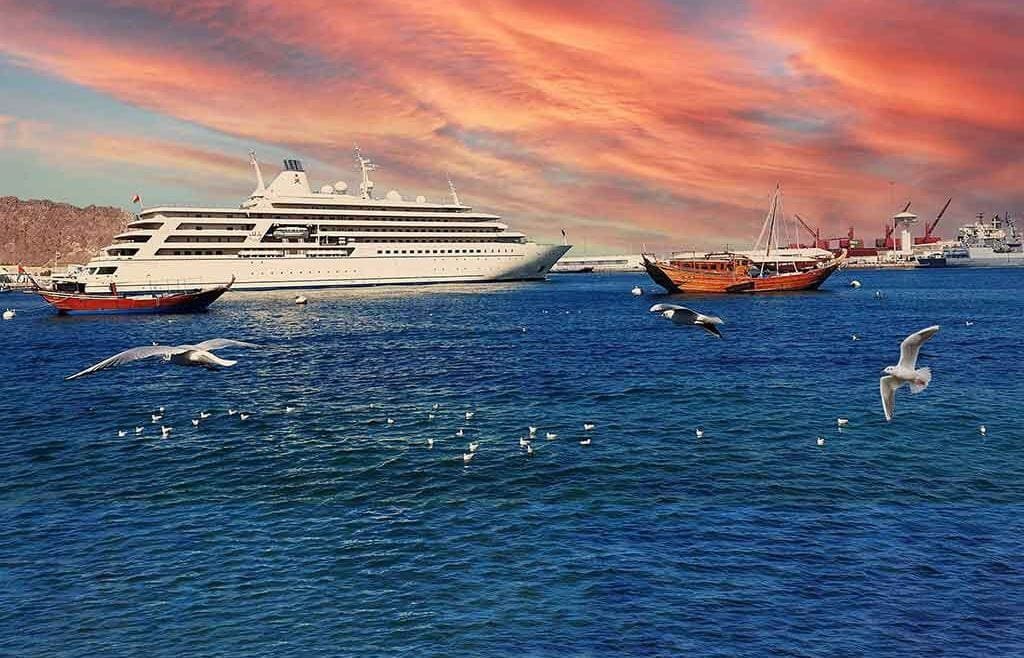Migratory Seagulls
Muttrah Corniche: Migratory Seagulls
A Winter Haven for Migratory Seagulls
Introduction to the Migratory Seagulls at Muttrah Corniche
Seagulls, those graceful birds often associated with coastlines, play an essential role in the ecosystem of Muttrah Corniche. Nestled along the picturesque shoreline of Oman, Muttrah Corniche serves as a haven for migratory seagulls, attracting flocks of these magnificent creatures each year. This article aims to delve into the fascinating world of migratory seagulls at Muttrah Corniche, exploring their behavior, habitat, and the factors influencing their migration patterns.
Additionally, we will examine the conservation efforts and challenges involved in protecting these seagulls, considering both the impacts of human activities and the opportunities for observing and appreciating these remarkable birds. By understanding the importance of these migratory seagulls, we can work towards their conservation and ensure the preservation of Muttrah Corniche’s natural treasures.
Understanding the Significance of Seagulls at Muttrah Corniche
If you’ve ever taken a stroll along the picturesque Muttrah Corniche, chances are you’ve encountered a flock of seagulls soaring above the azure waters or hovering around the bustling fish market. These migratory seagulls bring a touch of charm and liveliness to this popular waterfront promenade in Muscat, Oman.
Seagull Species Found at Muttrah Corniche
Muttrah Corniche is not just a beautiful spot for visitors; it is also a vital natural habitat for various seagull species. The ecosystem of this coastal area provides seagulls with a perfect environment to thrive. Its rocky coastlines, sandy beaches, and abundance of marine life make it a haven for these feathered creatures.
Among the seagull species found at Muttrah Corniche are the herring gulls and black-headed gulls. These elegant birds with their distinctive calls and graceful flight patterns add an exotic touch to the already captivating scenery.
Feeding Habits and Diet of Seagulls at Muttrah Corniche
Seagulls are not just beautiful to look at; they also exhibit fascinating behaviors and characteristics. These birds are highly social and form complex hierarchies within their flocks. You might have noticed them squabbling over scraps of food or competing for prime perching spots along the Corniche.
When it comes to food, seagulls are opportunistic feeders. At Muttrah Corniche, they have a varied diet consisting of fish, crustaceans, and even the occasional stolen French fry from unsuspecting visitors. They are not picky eaters and are often seen swooping down to snatch their meals with remarkable precision.
Role of Instinct and Navigation in Seagull Migration
The migratory patterns of seagulls at Muttrah Corniche are influenced by several factors. One key element is the seasonal climate and weather conditions. Seagulls tend to migrate to Muttrah during the winter months when the climate is milder and food sources are more abundant. They take advantage of the coastal resources and the relatively warmer temperatures offered by this region.
Another fascinating aspect of seagull migration is the role of instinct and navigation. Despite their seemingly carefree nature, seagulls possess an incredible ability to navigate over long distances. They rely on a combination of celestial cues, landmarks, and an internal compass to find their way back to their breeding grounds during the summer.
So, the next time you find yourself strolling along Muttrah Corniche, take a moment to appreciate the migratory seagulls that call this place home. Their presence adds a touch of wonder and reminds us of the interconnectedness of nature, even in the midst of a vibrant cityscape.
Conservation Organizations and Initiatives
Seagulls may seem like carefree birds, but they face their fair share of challenges in today’s world. Fortunately, there are numerous organizations and initiatives dedicated to their protection. These include local and international groups such as the Oman Bird Records Committee and BirdLife International. These organizations work on monitoring seagull populations, conducting research, and implementing conservation strategies to ensure their survival.
Threats to Seagull Populations and Nesting Sites
Seagulls face various threats to their populations and nesting sites. One of the primary challenges is habitat loss due to coastal development and human activities. As cities grow and expand, seagulls often lose their natural nesting areas, leading to a decline in their numbers. In addition, pollution, overfishing, and climate change can negatively impact their food sources, affecting their overall population health. Balancing human activities and conservation efforts is crucial to protect these magnificent birds.
Human Interaction and Disturbance Effects on Seagull Behavior
Seagulls are incredibly adaptable birds and have learned to coexist with humans in many coastal areas. However, certain human activities can have detrimental effects on their behavior. For example, feeding seagulls can disrupt their natural foraging patterns and make them dependent on human handouts. It’s also important to be mindful of not disturbing nesting sites, as constant disturbances can cause stress and lead to an abandonment of eggs or chicks.
Coastal Development and Habitat Destruction
Coastal development has brought both economic growth and habitat destruction. The construction of buildings, roads, and other infrastructure can encroach on seagulls’ nesting areas and disrupt their natural habitat. Additionally, the increase in tourism and recreational activities can result in further habitat degradation. Balancing development and conservation is crucial to ensure that seagulls and other coastal wildlife continue to thrive.
Educational and Recreational Value of Seagull Watching
Seagull watching at Muttrah Corniche offers both educational and recreational value. Observing these birds in their natural habitat provides an opportunity to learn about their behavior, migration patterns, and role in the ecosystem. It can also be a fun and relaxing activity for locals and tourists alike. The sight of seagulls soaring above the sparkling Arabian Sea is a sight that never fails to bring a smile to one’s face.
Best Practices for Responsible Seagull Observation
While enjoying seagull watching, it’s important to be a responsible observer. Avoid feeding seagulls as it can disrupt their natural foraging patterns and lead to dependency on humans. Respect the birds’ space and avoid getting too close to nesting sites to minimize disturbances. Additionally, refrain from littering and dispose of waste properly, as it can harm wildlife, including seagulls. By following these best practices, we can ensure a positive and sustainable seagull-watching experience.
Potential Measures for Seagull Population Management
To ensure the long-term conservation of seagulls at Muttrah Corniche, population management measures may be necessary. This could include monitoring population trends, implementing nesting site protection measures, and managing human activities in the area. By understanding the dynamics of the seagull population and taking proactive steps, we can help maintain a healthy and balanced ecosystem.
Community Engagement and Awareness Programs
Engaging the local community and raising awareness about the importance of seagull conservation is crucial. This can be done through educational programs, workshops, and campaigns that highlight the ecological role of seagulls and the need to protect their habitat. By fostering a sense of responsibility and appreciation for these birds, we can create a community that actively supports their conservation. After all, who wouldn’t want to protect these charismatic and graceful creatures?
In conclusion, the migratory seagulls of Muttrah Corniche are a significant part of the coastal ecosystem, bringing beauty and vitality to this renowned location. As we navigate the challenges of preserving their habitat and protecting their populations, it is crucial to raise awareness about the impact of human activities and promote responsible and sustainable practices.
By embracing conservation efforts and fostering a deeper appreciation for these magnificent birds, we can ensure that future generations will continue to witness the awe-inspiring sight of migratory seagulls gracing the skies of Muttrah Corniche. Let us all join hands in safeguarding these natural wonders and preserving the delicate balance of our precious coastal environments.
Practical Information
If you plan to visit Muttrah Corniche during the winter months, be sure to bring your camera to capture the stunning avian spectacle. The best time to witness the seagulls is during the cooler months between November and April when the weather is ideal for outdoor activities.
For those seeking accommodations, Muttrah offers a range of options to suit different budgets and preferences. You can choose from luxury resorts, or cozy guesthouses, or even consider staying in a traditional Omani village for a unique cultural experience.
1. Why do seagulls migrate to Muttrah Corniche?
Seagulls migrate to Muttrah Corniche primarily because of the abundant food sources and suitable nesting habitats available in the area. The coastal location provides easy access to fish, shellfish, and other marine invertebrates that make up a significant part of their diet. Additionally, the cliffs and rocky outcrops offer suitable nesting sites, providing seagulls with a secure environment to raise their young.
2. Are there specific times of the year when seagulls can be observed at Muttrah Corniche?
Yes, seagulls exhibit seasonal migration patterns, with specific times of the year when they can be observed at Muttrah Corniche. Typically, these migratory birds arrive in larger numbers during the winter months, seeking milder climates and ample food resources. However, some seagull species may also be present during other seasons, albeit in smaller numbers. It is recommended to check with local bird-watching organizations or naturalists to get more precise information on the migration patterns of seagulls at Muttrah Corniche.
3. How can I contribute to the conservation of migratory seagulls at Muttrah Corniche?
There are several ways you can contribute to the conservation of migratory seagulls at Muttrah Corniche. Firstly, it is important to be mindful of their habitats and avoid disturbing nesting areas or causing undue stress to the birds. If you are interested in seagull watching, adhere to responsible observation practices, keeping a respectful distance and minimizing any potential disturbance.
Supporting local conservation organizations and initiatives focused on the protection of seagulls and their habitats is also a valuable way to contribute. Lastly, spreading awareness about the importance of seagulls and their conservation needs among friends, family, and the broader community can help foster a culture of stewardship and care for these magnificent birds.



